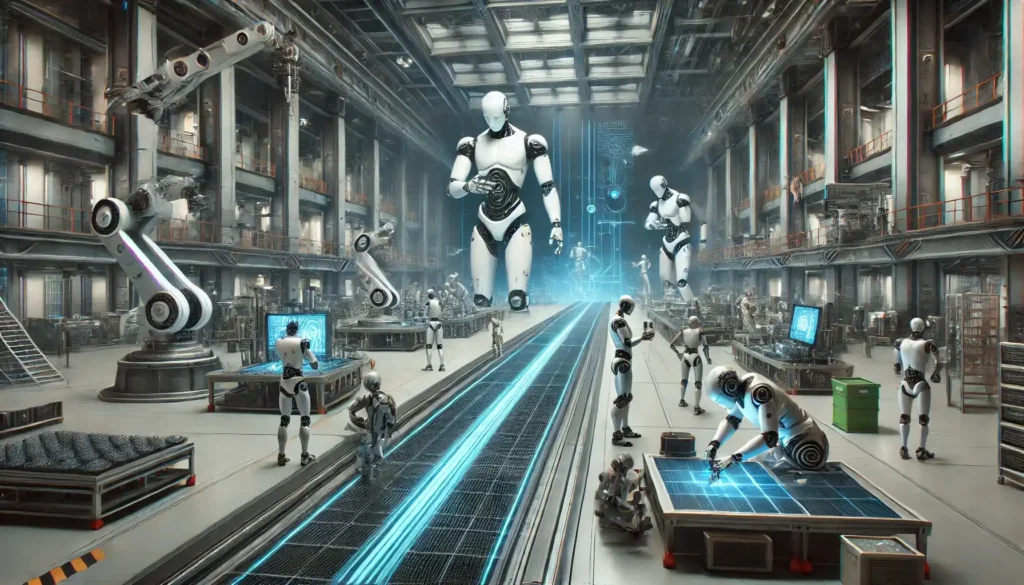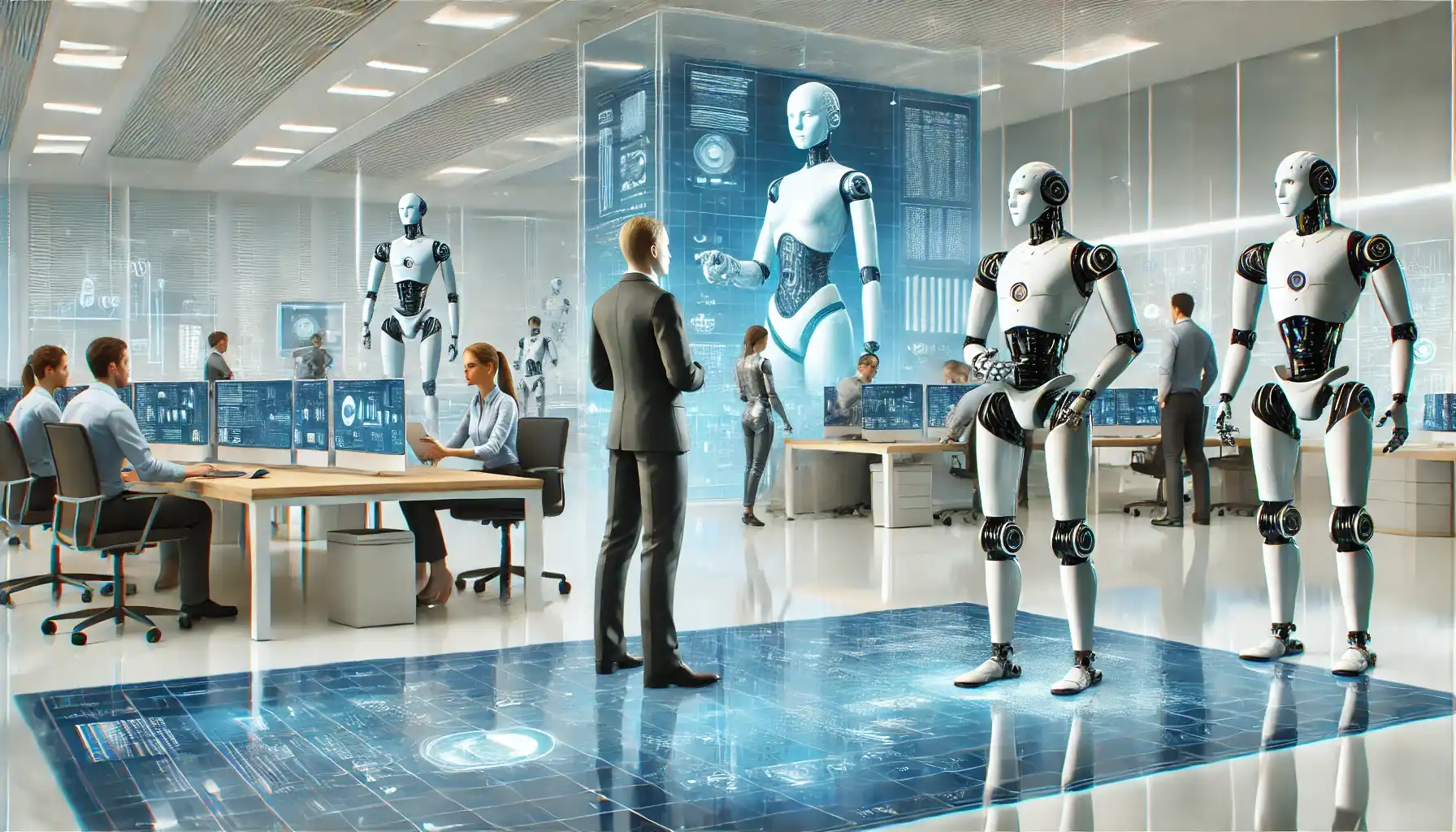The rise of robotics and automation has sparked a transformative conversation about the future of employment. While robots promise efficiency, safety, and productivity improvements, they also evoke concerns over job displacement and workforce re-skilling. Understanding the complex interplay between robotics and employment is essential for businesses, workers, and policymakers as they navigate this evolving landscape.
Table of Contents
- Introduction to Robotics and Employment
- The Impact of Robotics on the Job Market
- Benefits and Challenges
- Preparing for a Robotic Future
- Ethical and Societal Considerations
- Future Trends in Robotics and Employment
- Conclusion
- Trusty External Link
Introduction to Robotics and Employment
The integration of robotics into various industries has dramatically reshaped how work is performed. Robots now handle repetitive tasks, dangerous environments, and complex calculations, freeing humans to focus on creativity, strategy, and interpersonal skills. However, this shift brings questions: Will robots replace human jobs entirely? Can the workforce adapt to a landscape dominated by automation? The answers are nuanced, involving an interplay of technology, policy, and human resilience.
The Impact of Robotics on the Job Market
Job Displacement Concerns
Robots excel at automating tasks that are repetitive, hazardous, or require high precision, which has led to concerns about job displacement. Manufacturing lines, for instance, have integrated robotic arms to assemble products faster and more accurately than human workers, leading to reductions in manual labor roles. Similarly, service robots in retail or customer support may replace some entry-level positions.
However, job displacement is not uniform across all sectors. While certain roles may shrink or change, the impact often results in job transformation rather than outright elimination. Workers may transition to roles requiring oversight of robotic systems, maintenance, programming, or creative problem-solving that robots cannot replicate.
Job Creation and Transformation
As robotics technology evolves, new job categories and industries are emerging. Roles in robot programming, system integration, and maintenance are on the rise. Beyond direct robotics-related jobs, increased efficiency can lead to economic growth, opening opportunities in sectors such as logistics, data analysis, and customer service where human skills remain crucial.
Emerging Job Areas Include:
- Robotics Technician: Responsible for repair, calibration, and maintenance of robotic systems.
- AI and Machine Learning Specialist: Develops algorithms to enhance robot performance.
- Robotic Process Automation (RPA) Developer: Designs automated workflows in business processes.
Benefits and Challenges
Efficiency and Safety
Benefits of Robotics in the Workplace:
- Increased Productivity: Robots can work 24/7 without fatigue, accelerating production cycles and reducing costs.
- Enhanced Safety: Robots can be deployed in dangerous environments, reducing workplace injuries and allowing humans to avoid hazardous tasks.
- Quality and Consistency: Automation leads to consistent output, reducing errors and improving product quality.
Challenges to Consider:
- Transition Costs: Implementing robotics can require significant upfront investment in equipment, training, and infrastructure.
- Workforce Disruption: Introducing robots often necessitates restructuring roles, potentially leading to job insecurity for workers unprepared for the shift.
Workforce Adaptation
Adapting to a robotic workforce involves not just technology adoption but also developing a workforce equipped with new skills. Companies and governments must work together to facilitate training programs and career transition support.
Preparing for a Robotic Future
Education and Re-skilling
To prepare for a future intertwined with robotics, education systems must evolve. Integrating STEM (Science, Technology, Engineering, and Mathematics) curricula from an early age, alongside courses in robotics and AI, ensures that the next generation is ready for upcoming challenges. Moreover, adult education programs and vocational training focused on robotics, automation technologies, and data analysis can help current workers transition into new roles created by this technological shift.
Lifelong Learning and Adaptability
In an era where job roles continuously evolve, lifelong learning is paramount. Employees should be encouraged to take courses, attend workshops, and engage in hands-on training with robotic technologies. Employers can support this by investing in professional development programs, providing access to online learning platforms, and fostering a culture of continuous improvement.
Ethical and Societal Considerations
As robots become more prevalent, ethical questions arise:

- Equitable Access: Ensuring that the benefits of robotics are shared broadly across society and do not exacerbate inequality.
- Privacy Concerns: Robots equipped with sensors and cameras can collect sensitive data, raising issues about data security and privacy.
- Human Dignity and Purpose: Balancing automation with the need for meaningful work, preserving human dignity in a highly automated future.
Transparent policies and ethical guidelines should guide the deployment of robotics, ensuring that workers’ rights and societal values are upheld.
Future Trends in Robotics and Employment
- Increased Human-Robot Collaboration: The future workplace may see humans and robots working side by side, each complementing the other’s strengths. Cobots (collaborative robots) are leading this trend, designed to assist rather than replace human workers.
- AI-Driven Decision Support: Artificial intelligence will offer decision support tools that augment human judgement in complex tasks, integrating seamlessly with robotic systems.
- Remote and Telepresence Work: Robots could serve as extensions of human workers in hazardous environments or distant locations, enabling remote operation with a high degree of control.
- Continued Job Transformation: As robotics automates routine tasks, job roles will evolve to focus on creativity, critical thinking, and interpersonal skills—areas where humans excel.
- Global and Inclusive Policies: Governments and organizations will increasingly collaborate on frameworks that facilitate workforce transition, equitable access to education, and ethical deployment of robotics.
Conclusion
The relationship between robotics and employment is complex and evolving. While robotics has the potential to displace certain jobs, it also creates new opportunities and transforms existing roles. The key to a successful transition lies in proactive education, workforce training, and ethical considerations that balance technological advancements with human well-being.
By embracing automation thoughtfully, businesses can unlock unprecedented efficiencies, and workers can adapt by acquiring new skills that complement robotic capabilities. The future of work will likely feature a harmonious blend of human creativity and robotic precision, driving innovation and growth across industries.
For more insights on robotics and its impact on employment, explore resources provided by the International Federation of Robotics (IFR). The IFR offers comprehensive data, publications, and research on robotics trends, automation, and workforce implications, providing valuable guidance for navigating the future of work.

